We are closely monitoring the potential government shutdown on October 1 and its impact on the CACFP. As your trusted partner, we’ll keep you informed with timely updates.
Read MoreSeptember 29, 2025 USDA announced that the CACFP and SFSP Area Eligibility Mapper has been updated for fiscal year 2026. Why It Matters Census data and school data are the two primary sources that may be used to determine whether a site is area eligible in CACFP and SFSP. Area eligibility is used to determine…
Read MoreWhat is Offer Versus Serve?
Read MoreThe National CACFP Association (NCA), a leading national organization supporting the USDA Child and Adult Care Food Program (CACFP) community since 1986, released its FY25 Year in Review, highlighting its ongoing impact in advocacy, education and community-building.
Read MoreUSDA announced $72.9 million in grant funding to states through the Specialty Crop Block Grant Program. The purpose of the SCBGP is to enhance the competitiveness of specialty crops, including fruits, vegetables, tree nuts, dried fruits, horticulture and nursery crops (including floriculture).
Read MoreWe are closely monitoring the potential government shutdown on October 1 and its impact on the CACFP. As your trusted partner, we’ll keep you informed with timely updates.
Read MoreBeginning October 1, 2025, the Child and Adult Care Food Program (CACFP) will implement new regulations requiring limits on added sugars in breakfast cereals and yogurts served in child and adult care settings.
Read MoreThis October marks the inaugural Farm to CACFP Week, hosted by the National CACFP Association to celebrate the benefits of connecting child and adult care programs with local foods.
Read MoreThe National CACFP Association (NCA) will host National Farm to CACFP Week from October 12–18, 2025, an annual education campaign focused on connecting child and adult care providers with local foods.
Read MoreThe 2025 CACFP Virtual Summit Scholarship winners have been announced! View the list of all 95 winners.
Read MoreFarm to CACFP connects providers to local food producers with the objectives of serving locally-grown foods and providing nutrition education. Check out these upcoming events at NCA!
Read MoreToday, October 1, 2024, the United States Department of Agriculture (USDA) announced $200 million for Child and Adult Care Food Program (CACFP) operators through the Commodity Credit Corporation (CCC).
Read MoreCACFP advocacy is central to the mission of National CACFP Sponsors Association (NCA) and NCA is continuously working to support and advocate for you! This year, we’ve ramped up our advocacy work to help raise awareness and expand and improve the CACFP.
Read MoreDuring the Covid-19 pandemic, the Keep Kids Fed Act provided flexibilities that were critical for the ability to continue to provide nutritious meals and maintain operation of the Child and Adult Care Food Program (CACFP).
Read MoreAdvocacy might seem scary, some of our most active advocates admit to being intimidated by advocacy before they got started, but it can be simple. Advocacy can be as simple as telling your friend about your job or posting a picture of the meals you make on social media (really!).
Read MoreThe United States Surgeon General, Dr. Vivek Murthy, released an Advisory on the mental health and well-being of parents, stating an urgent need to support parents, caregivers, and families. Surgeon General’s Advisories are public statements that call the American people’s attention to a critical public health issue that require immediate awareness and action.
Read MoreExciting news! Head Start programs have an opportunity to access one-time supplemental funds to support nutrition services and healthy eating for enrolled children and families. You can use this funding for staff training on resources and educational opportunities to help your program improve outcomes for children and families and align with USDA requirements – like the CACFP!
Read MoreThe Child and Adult Care Food Program has new creditable foods listed on the USDA Food Buying Guide! If you are new to the FBG, this interactive tool allows for easy display, search, and navigation of food yield information. In addition, users can compare yield information, create a favorite foods list, and access tools, such as the Recipe Analysis Workbook (RAW) and the Product Formulation Statement Workbook.
Read MoreThe Child and Adult Care Food Program community asked for more Spanish resources to be available on the National CACFP Sponsors Association website and we heard you! Available now in Spanish are more resources to help sponsors and providers with meal pattern requirements, best practices, and so much more!
Read MoreServing meals to young people year-round benefits children, families, and care providers. To do this, many providers transition from operating the USDA Child and Adult Care Food Program (CACFP) At-Risk Afterschool (ARAS) during the school year to the Summer Food Service Program (SFSP) while school is out. For an overview of the main differences between SFSP and CACFP ARAS, see the comparison chart below.
Read MoreNCA understands that the end of flexibilities will cause challenges for many CACFP sponsors and providers and we commend your continued commitment to providing nutritious meals and snacks to the children or adults in your care. In preparation for the end of the additional reimbursement, we have collected the following resources to help you successfully provide meals even if your available budget decreases.
Read MoreWhat is Offer Versus Serve?
Read MoreWhat does the term “ounce equivalents” mean?
Read MoreAre FDA Exempt Infant Formulas creditable in the CACFP?
Read MoreThese regulations will go into effect in the CACFP, starting October 1, 2025.
Read MoreCan juice from a farm stand be served in the CACFP?
Read MoreAt what age can infants eat eggs?
Read MoreExciting news! Head Start programs have an opportunity to access one-time supplemental funds to support nutrition services and healthy eating for enrolled children and families. You can use this funding for staff training on resources and educational opportunities to help your program improve outcomes for children and families and align with USDA requirements – like the CACFP!
Read MoreThe Child and Adult Care Food Program has new creditable foods listed on the USDA Food Buying Guide! If you are new to the FBG, this interactive tool allows for easy display, search, and navigation of food yield information. In addition, users can compare yield information, create a favorite foods list, and access tools, such as the Recipe Analysis Workbook (RAW) and the Product Formulation Statement Workbook.
Read MoreThe Child and Adult Care Food Program community asked for more Spanish resources to be available on the National CACFP Sponsors Association website and we heard you! Available now in Spanish are more resources to help sponsors and providers with meal pattern requirements, best practices, and so much more!
Read MoreServing meals to young people year-round benefits children, families, and care providers. To do this, many providers transition from operating the USDA Child and Adult Care Food Program (CACFP) At-Risk Afterschool (ARAS) during the school year to the Summer Food Service Program (SFSP) while school is out. For an overview of the main differences between SFSP and CACFP ARAS, see the comparison chart below.
Read MoreNCA understands that the end of flexibilities will cause challenges for many CACFP sponsors and providers and we commend your continued commitment to providing nutritious meals and snacks to the children or adults in your care. In preparation for the end of the additional reimbursement, we have collected the following resources to help you successfully provide meals even if your available budget decreases.
Read MoreUSDA released their second report on the Study of Nutrition and Activity in Child Care Settings (SNACS-II), which follow their first in 2022. SNACS-II uses data from program year 2022-23 to assess how well children’s diets and CACFP meals align with the Dietary Guidelines for Americans.
Read MoreA recent study by our partners at Child Care Aware® of America reveals that parents across the nation are struggling to find affordable, high-quality child care. The survey shows that parents are piecing together multiple care arrangements and facing challenges balancing work and caregiving.
Read MoreThe CDC’s 2025 Early Childhood Nutrition Report gives us a big-picture look at how young children in the U.S. are eating and growing. It focuses on kids from birth to age 5 and shares important facts about breastfeeding, starting solid foods, eating healthy and how states support good nutrition.
Read MoreThe “Characteristics of Emergency Shelters Participating in the CACFP” study by USDA seeks to better understand the characteristics of CACFP emergency shelters, who they serve, how CACFP fits into their operations, and their challenges with CACFP. The study was conducted in 2023 and collected data from 242 emergency shelters that participate in CACFP in Fiscal Year 2023.
Read MoreA survey was administered in the spring of 2023 of licensed California family child care homes (FCCH) to assess the perceived impacts of the increased reimbursement during the Covid-19 pandemic on CACFP participation and anticipated challenges with reinstated tiered rates.
Read MoreThe USDA recently released a study on the “Characteristics of Adult Day Care Centers that Participate in the USDA’s Child and Adult Care Food Program” which seeks to better understand key characteristics of adult day care centers participating in CACFP.
Read More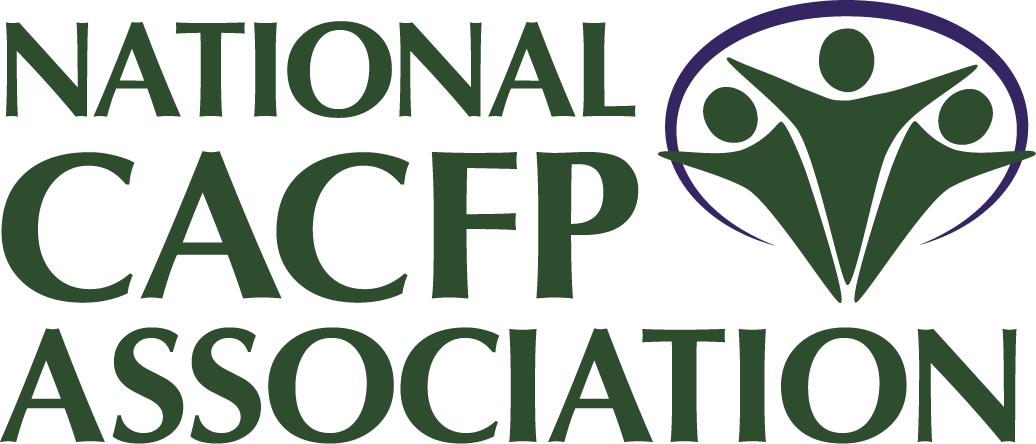

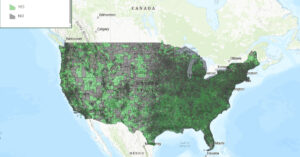

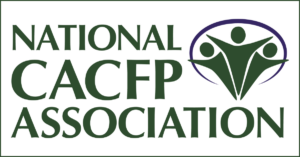

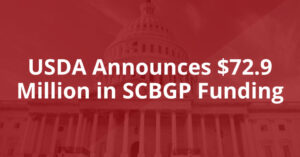
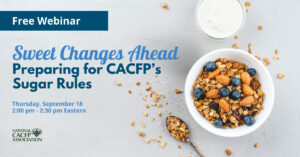
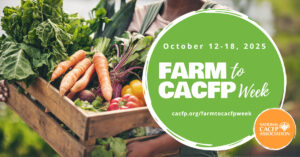
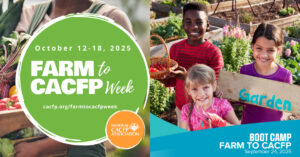


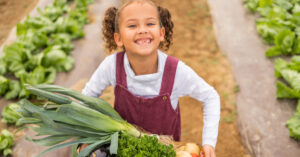
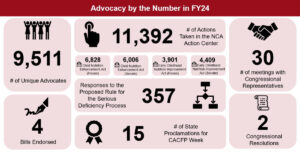






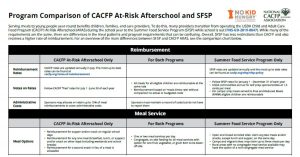

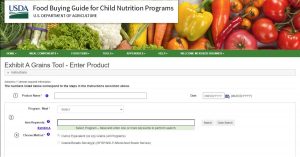







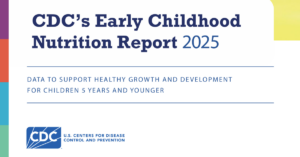








USDA Request for Comment: Documentation Related to Meal Pattern Final Rule
USDA FNS is seeking input from CACFP and SFSP operators on the documentation requirement for operators serving primarily American Indian or Alaska Native children to show their eligibility for the menu planning option allowing them to serve vegetables to meet the grains requirement.
Read More